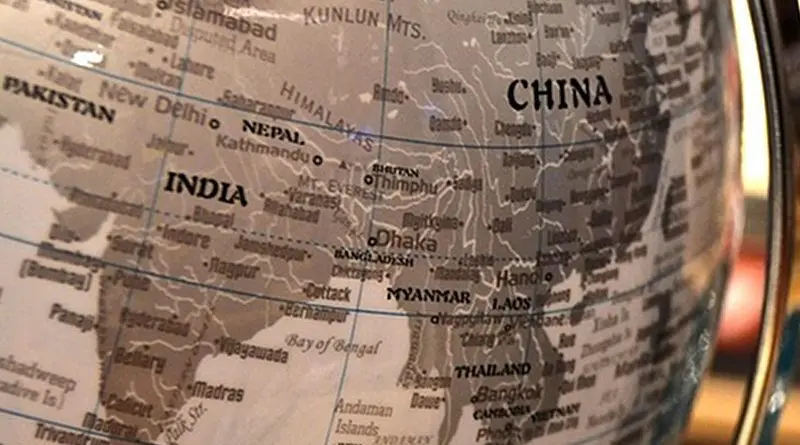Navigating Ambiguity And Consistency: Understanding India’s Evolving Nuclear Posture – OpEd
The South Asian nuclear landscape is marked by a delicate balance of strategic ambiguity and consistency, particularly within the context of India’s evolving nuclear posture. Recent developments have prompted questions about India’s long-standing policy of “No First Use” (NFU) of nuclear weapons. While India has repeatedly reaffirmed its commitment to NFU, statements suggesting a potential reconsideration have raised concerns. This shed light on the intricacies of India’s nuclear strategy, explores the roles of China and Pakistan, and emphasizes the need for a clearer understanding of nuclear postures in the region.
Before delving into India’s evolving nuclear policy, it’s crucial to grasp the concepts of strategic ambiguity and consistency. In the context of nuclear deterrence, strategic ambiguity refers to a nation’s intentional vagueness about its nuclear intentions or red lines. Strategic consistency, on the other hand, indicates a steadfast commitment to a particular nuclear posture or policy. Both ambiguity and consistency play a vital role in shaping the dynamics of nuclear deterrence.
India’s Evolving NFU Policy
India’s NFU policy has been a cornerstone of its nuclear posture. Initially drafted in 1999, it stated that India would not initiate a nuclear first strike but would respond with punitive retaliation in case of deterrence failure. However, India’s nuclear doctrine underwent an evolution in 2003, introducing the possibility of nuclear retaliation in the event of a “major attack against India or Indian forces anywhere by biological or chemical weapons.”
Recent statements by Indian officials have added a layer of complexity to this doctrine. In 2016, Manohar Parrikar, India’s defense minister at the time, questioned whether India should be bound by NFU. In 2019, Rajnath Singh, his successor, suggested that India’s NFU policy might change in the future depending on circumstances. While Indian officials have often framed these statements as personal opinions, they have triggered debates about India’s nuclear intentions.
The interplay of China and Pakistan adds another layer of complexity to India’s nuclear posture. China’s own NFU policy has been the subject of debate, dating back to General Xiong Guangkai’s 1995 statement about considering the use of nuclear weapons in a conflict over Taiwan. Major General Zhu Chenghu’s 2005 claim that China would engage in nuclear retaliation if the United States aimed missiles at Chinese territory further fueled this debate.
The debate reached its peak when China’s 2013 defense white paper omitted reference to NFU, raising speculation that China might abandon this policy. Subsequent defense white papers reaffirmed China’s commitment to NFU, but questions about its stability persisted. Some experts raised concerns about how China’s technological advances might affect its NFU commitment, particularly if attacked by high-precision conventional weapons or in the context of territorial disputes, such as Taiwan or Arunachal Pradesh.
While Pakistan’s nuclear posture is often considered more ambiguous and influenced by China, Indian experts have expressed confidence in Pakistan’s relative consistency and rationality. They have cited Pakistan’s expansion of tactical nuclear weapons programs and their concern that these advances may be impacted by China. Given these technological shifts, some Indian experts have suggested that India should enhance its strategic ambiguity to prevent adversaries from exploiting the “vacuum” left by NFU.
The Role of Ambiguity in India’s Strategy
India’s relationship with both China and Pakistan underscores the importance of strategic ambiguity in its nuclear policy. While India officially maintains its NFU commitment, experts have called for a reevaluation of its nuclear posture. Some have proposed a “China-tailored” version of NFU, allowing India to maintain flexibility in response to evolving regional dynamics. Others have even suggested that India could omit NFU altogether, emphasizing its role as a “responsible nuclear power.”
The complexities of India’s nuclear strategy become evident when considering the potential impact of its ambiguity on China and Pakistan. While China’s NFU posture has been a point of debate, India’s consistency in adhering to NFU may be more ambiguous than initially assumed. On the other hand, despite ascribed ambiguity, Pakistan’s nuclear posture appears more consistent, with clear aims, making India more confident in its behavior.
The ambiguity of nuclear postures in South Asia poses a challenge for stability and security. Misinterpretations of intentions or capabilities can lead to miscalculations with dire consequences. To navigate this complexity, a systematic reevaluation of assumptions about nuclear postures is essential.
Official engagement between India and China on nuclear issues is a critical step in achieving a better understanding of each other’s positions and intentions. Assuming strategic consistency in a deterrence relationship based on growing strategic ambiguity may lead to misjudgments and missteps.
Conclusion
India’s evolving nuclear posture, with questions surrounding its NFU policy, presents a multifaceted challenge in the South Asian region. The interplay between strategic ambiguity and consistency, coupled with the influence of China and Pakistan, creates a complex landscape that demands a nuanced approach to nuclear deterrence. In light of this complexity, it is crucial for regional players, including India, to reevaluate assumptions and engage in transparent dialogue. The need for clarity in nuclear postures is paramount to maintaining stability, preventing miscalculations, and ultimately ensuring peace and security in the region. Balancing ambiguity and consistency in nuclear deterrence is a delicate task, one that requires astute diplomacy and a profound understanding of the intricate dynamics at play.

